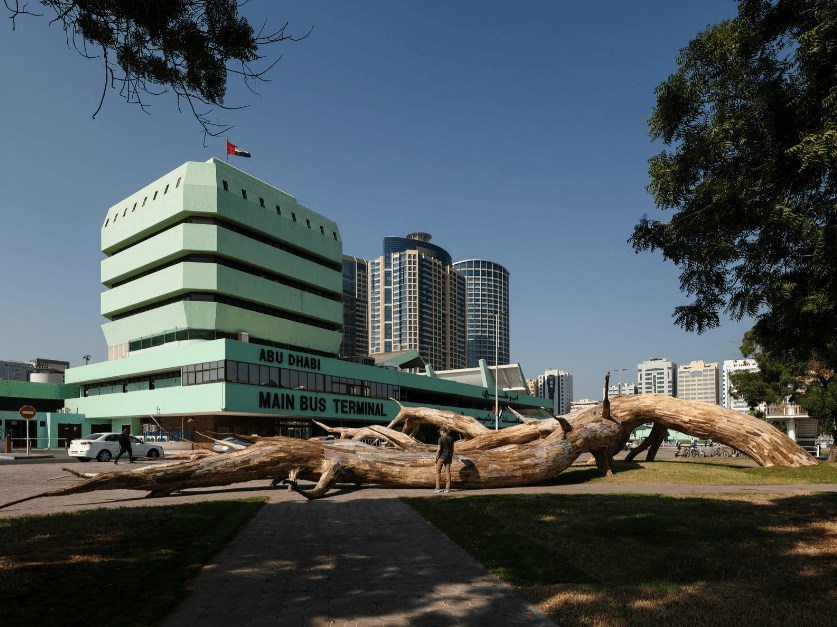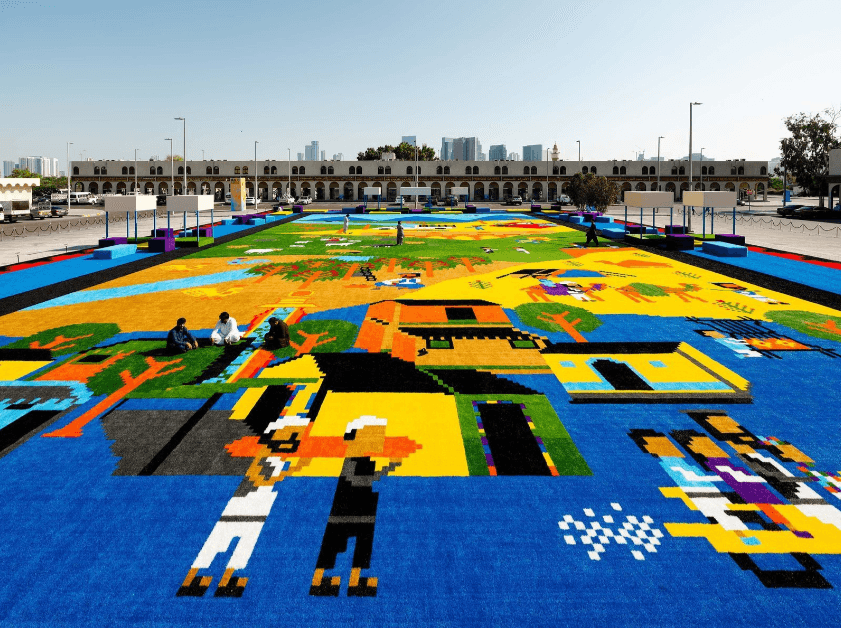Abu Dhabi: The inaugural Public Art Abu Dhabi Biennial presents a captivating open-air museum experience, featuring over 70 local and international artists whose works have transformed the city and the Al Ain Oasis. This pioneering event, curated under the guidance of Reem Fadaa, celebrates art that engages the senses and encourages public participation. Embracing the theme of ‘public’ within Abu Dhabi’s unique landscape, the biennial spans eight distinctive routes, inviting visitors to connect with familiar and new locations through fresh artistic perspectives.

The debut collection of artworks is installed throughout Abu Dhabi city and Al Ain Oasis, with additional pieces scheduled for unveiling in January. The exhibition will run until April 30, 2025. The main routes include: Abu Dhabi Corniche, Abu Dhabi Bus Terminal, Downtown Abu Dhabi, multiple public parks (Urban, Formal, Lake, and Recreation Parks), The Carpet Souq, The National Theatre, Abu Dhabi Cultural Foundation, and Al Ain Oasis (covering Hili Archaeological Park and Al Jahili Fort).
Highlights of the Biennial Installations
Floating Fragments by Seema Nusrat
Set in the middle of Corniche Lake at Lake Park, Pakistani artist Seema Nusrat’s installation draws urgent attention to rising flood risks linked to climate change. The piece depicts a submerged house, its terracotta roof barely visible above the water, symbolizing how urbanization and neglect threaten cultural heritage. Nusrat’s work acts as a powerful call to environmental responsibility.

D-constructing Collective Exhibition by Afra Al Dhaheri
Emirati artist Afra Al Dhaheri explores themes of time and presence through an immersive installation inside the National Theater. Constructed from wooden frameworks, tangled ropes, and enhanced by red-tinted windows, the space encourages visitors to slow down, engage their senses, and escape everyday chaos. The woven ropes symbolize harmony between mind and body.

Drama 1882 by Wael Shawky
Egyptian multidisciplinary artist Wael Shawky presents a 45-minute theatrical film installation at the National Theater, fresh from the Egyptian Pavilion at Venice Biennale. The work reexamines the 1882 Urabi Revolution through a musical narrative featuring puppet-style storytelling and pink velvet curtain tunnels. Shawky challenges colonial narratives by merging historical fact with imagination to recontextualize history.

Among Trees by Khalil Rabah
Palestinian artist Khalil Rabah’s immersive installation features 15 mature olive trees planted in rusted metal containers, symbolizing the uprooting of Palestinians. Some trees rotate on plates, evoking Sufi ritual cycles and blurring boundaries between nature and human-made environments, underscoring themes of memory and displacement.

Desnatureza 7 by Henrique Oliveira
Positioned outside Abu Dhabi Bus Terminal, Brazilian artist Henrique Oliveira’s sprawling installation resembles a colossal toppled tree made of reclaimed wood. Originally created as ‘Fitzcarraldo’s Dream,’ the piece reflects human ambition clashing with natural landscapes, inspired by Werner Herzog’s film Fitzcarraldo and crafted from discarded urban wood.

Barzakh by Wael Al Awar
Architectural studio WaiWai’s founder Wael Al Awar presents Barzakh, a pavilion on the Corniche made from innovative eco-friendly materials including recycled plastic, palm fiber, and desalination brine. This structure reimagines industrial waste as a resource, inviting public interaction and symbolizing a transitional “liminal” space that envisions sustainable architectural futures for the region.

Where Lies My Carpet is Thy Home by Christopher Joshua Benton
Installed in the Carpet Souq, Abu Dhabi-based American artist Benton’s collaborative work weaves personal stories of Afghan, Pakistani, and Indian merchants. The carpet design combines Afghan war carpet influences with 8-bit pixel aesthetics, narrating a lifecycle from raw wool to finished rugs, fostering dialogue about the migrant community’s cultural presence in the UAE.

Homesickness by Farah Al Qasimi
Emirati artist Farah Al Qasimi pays tribute to the pearl diving heritage of the UAE with an installation on the Corniche featuring five iridescent pearl oysters arranged in a semi-circle. The piece incorporates sound, chants traditionally sung by pearl divers’ wives, and LED lights, giving voice to often-overlooked women’s contributions to the UAE’s maritime history.

Urban River by Kader Attia
Algerian-French artist Kader Attia’s work at Formal Park examines injury and repair through a pavilion made of stainless steel frames patterned with cracks found in urban pavement. These cracks symbolize nature’s persistence and invite viewers to redirect their gaze upward, reflecting on a city’s imperfections and collective memory shaped by colonial history.

Tentarium by Paweł Althamer
Inspired by Abu Dhabi’s free-roaming cats, Polish sculptor Althamer created a cat-shaped tent in Lake Park near Café Layali Zaman. The tent, covered in traditional Sadu weaving, functions as a communal canvas where visitors are encouraged to paint and draw. A bronze cat sculpture guards the entrance, while workshops and events animate the space, reflecting the city’s diverse population.

Kombwelo 504 by Sammy Baloji
Congolese artist Sammy Baloji, with Jean Katambayi, presents a life-sized Peugeot 504 car sculpture made from copper wire and black irrigation tubes. This piece critiques Belgian colonization and resource exploitation in the Congo, referencing miniature wire cars crafted by Congolese children. The materials symbolically connect Abu Dhabi’s irrigation systems with the transformation wrought by oil extraction.

